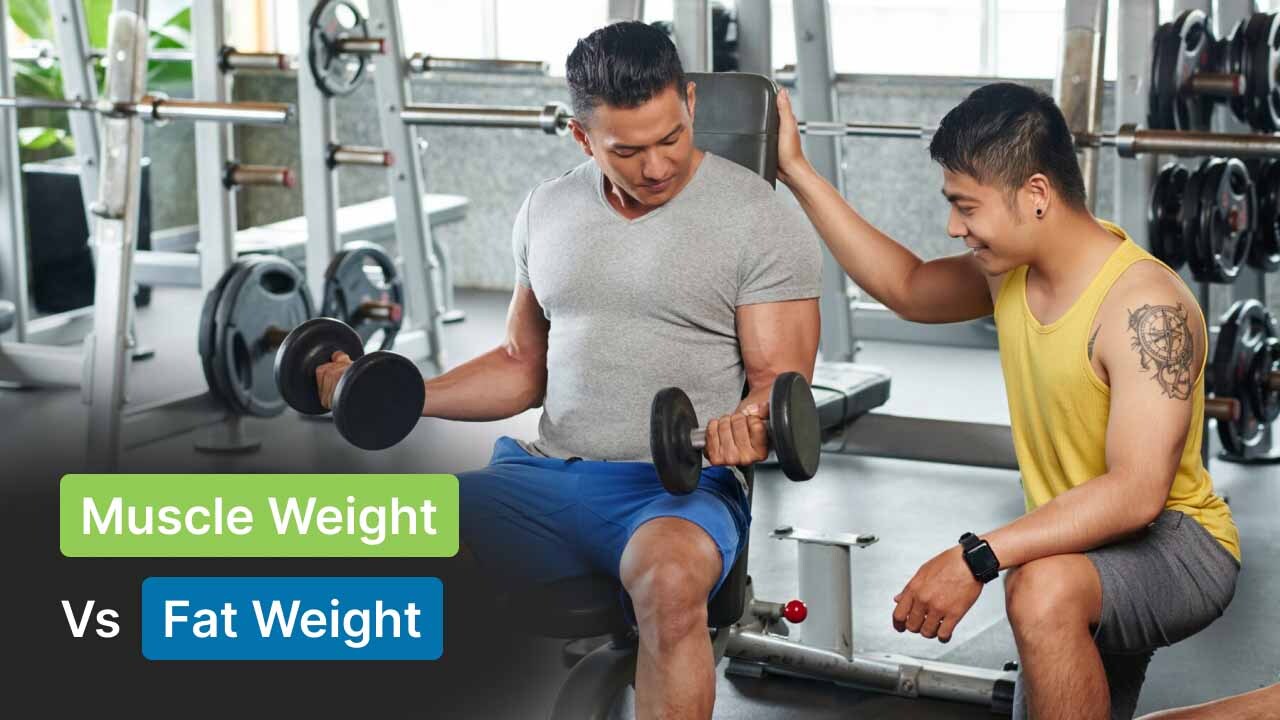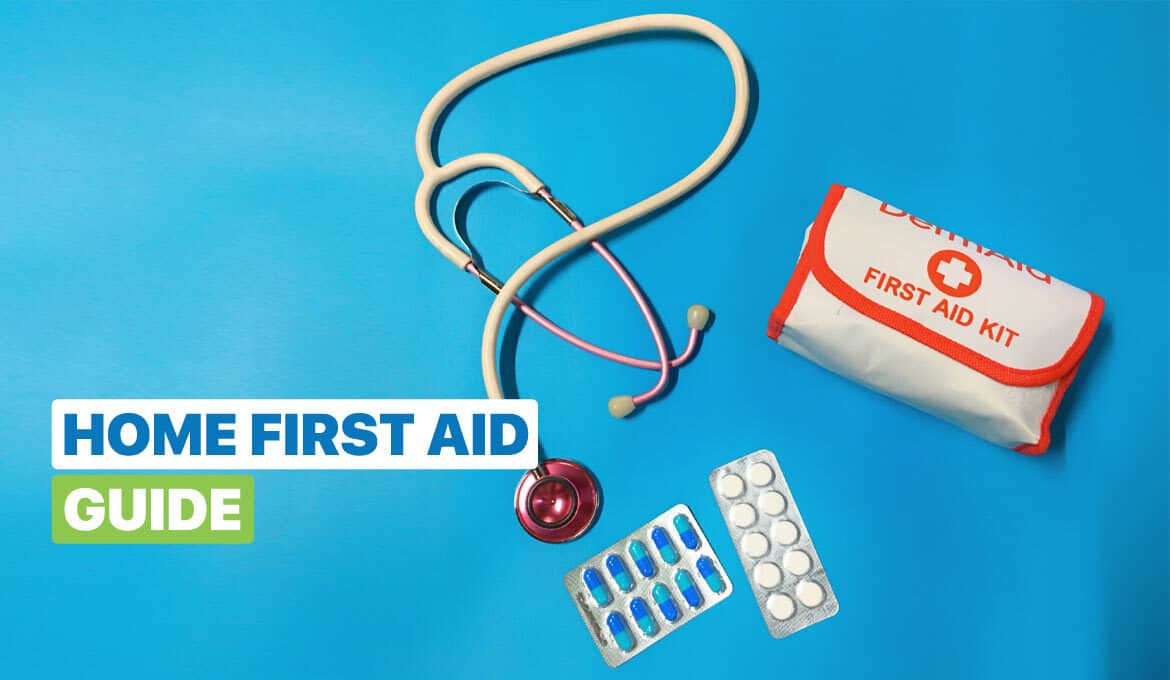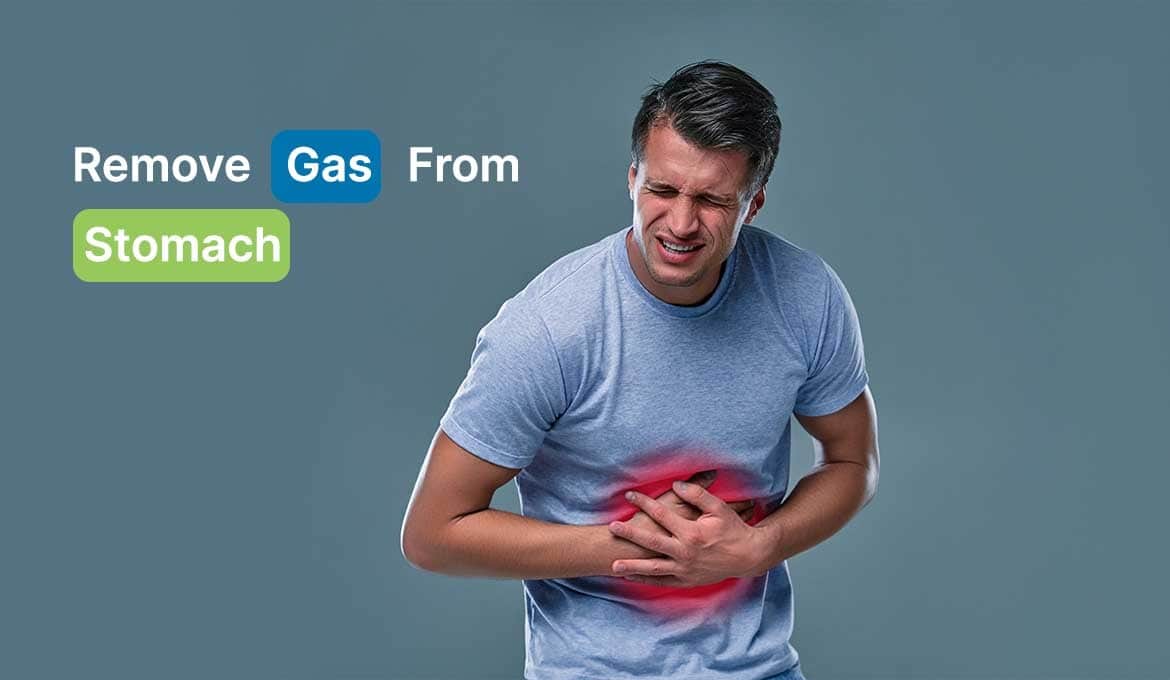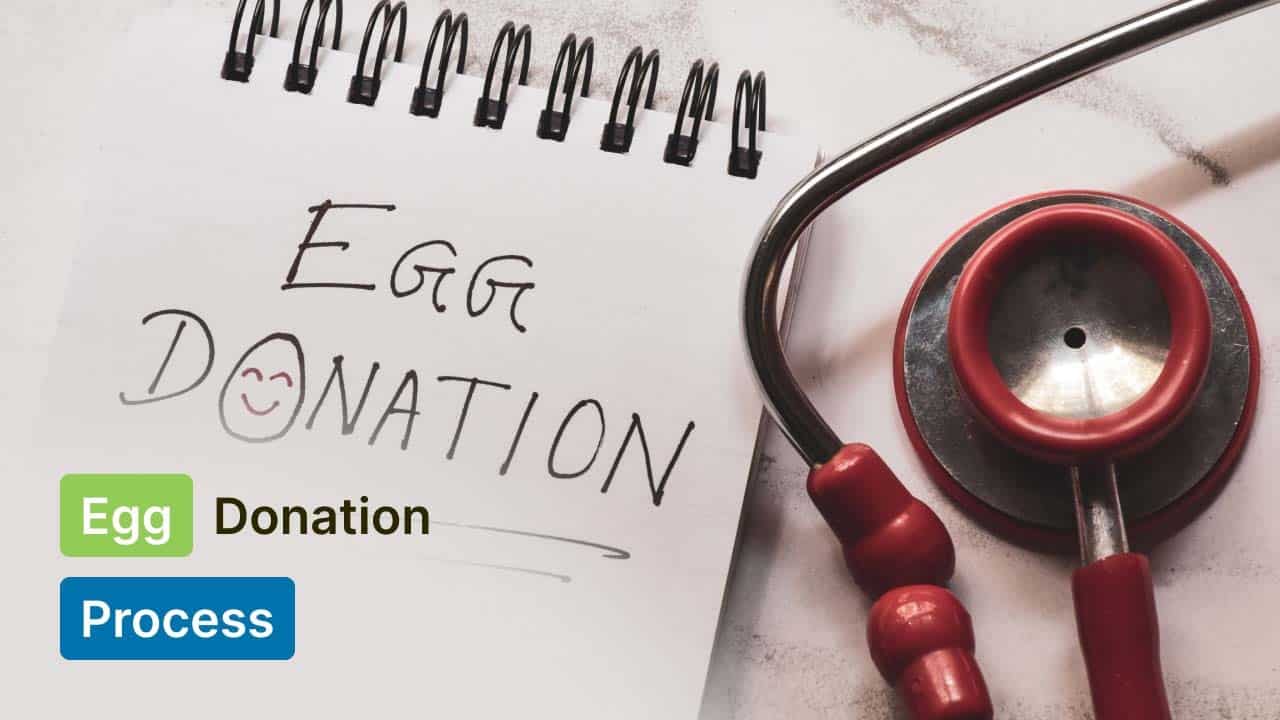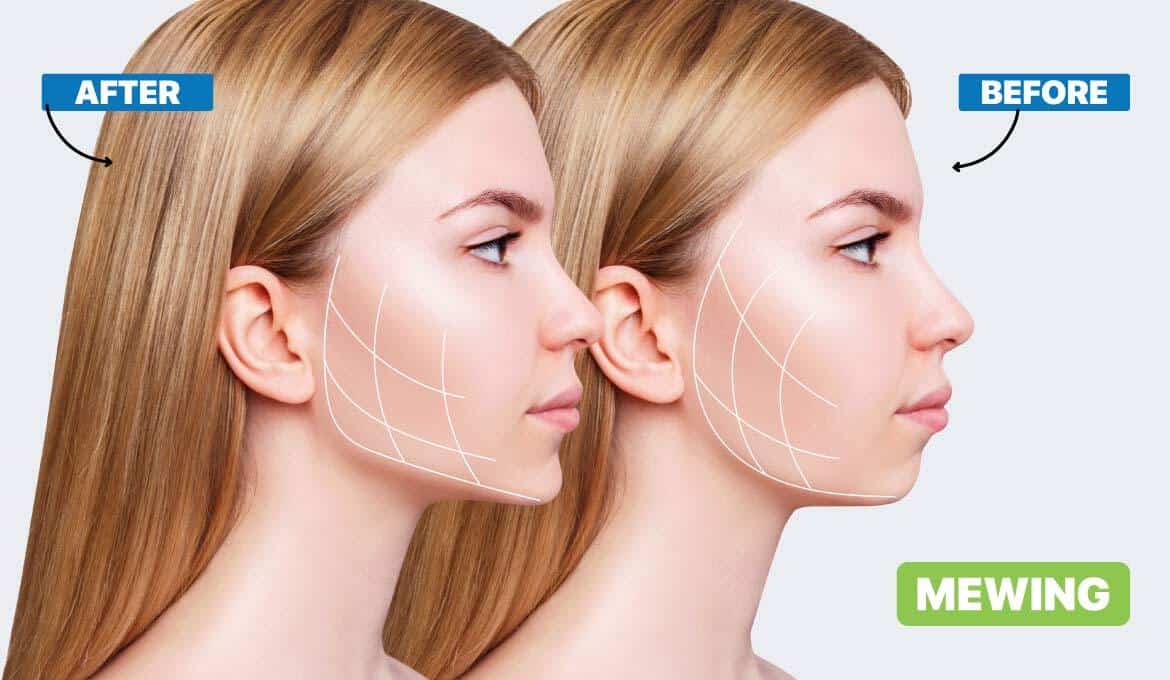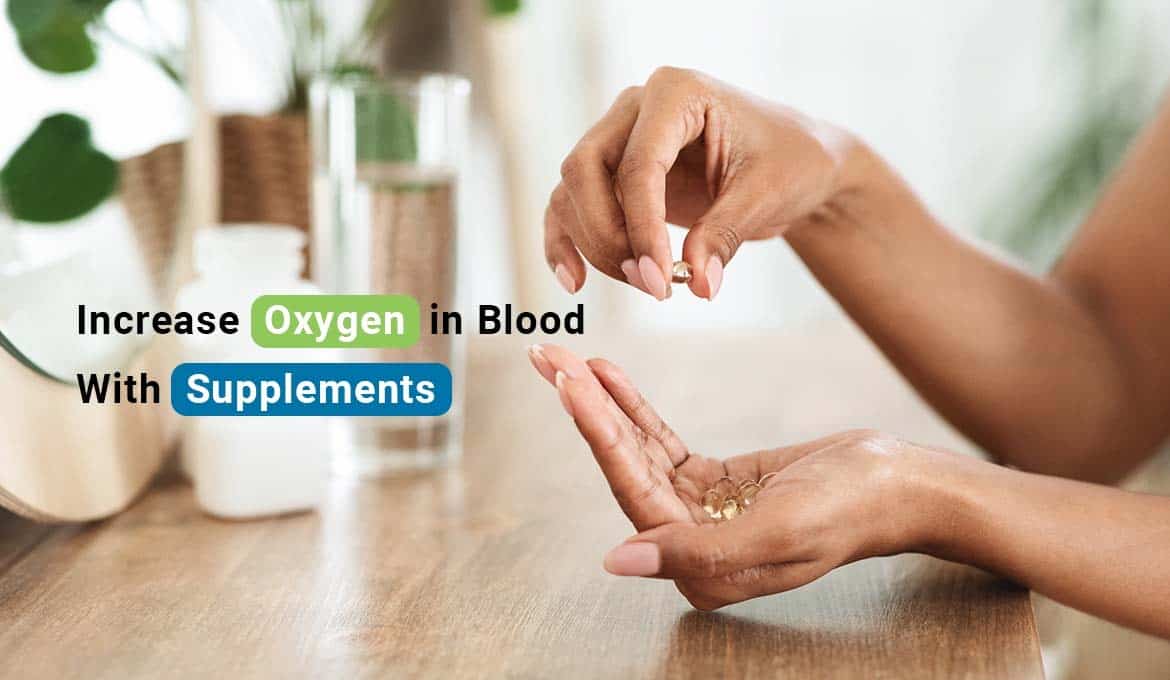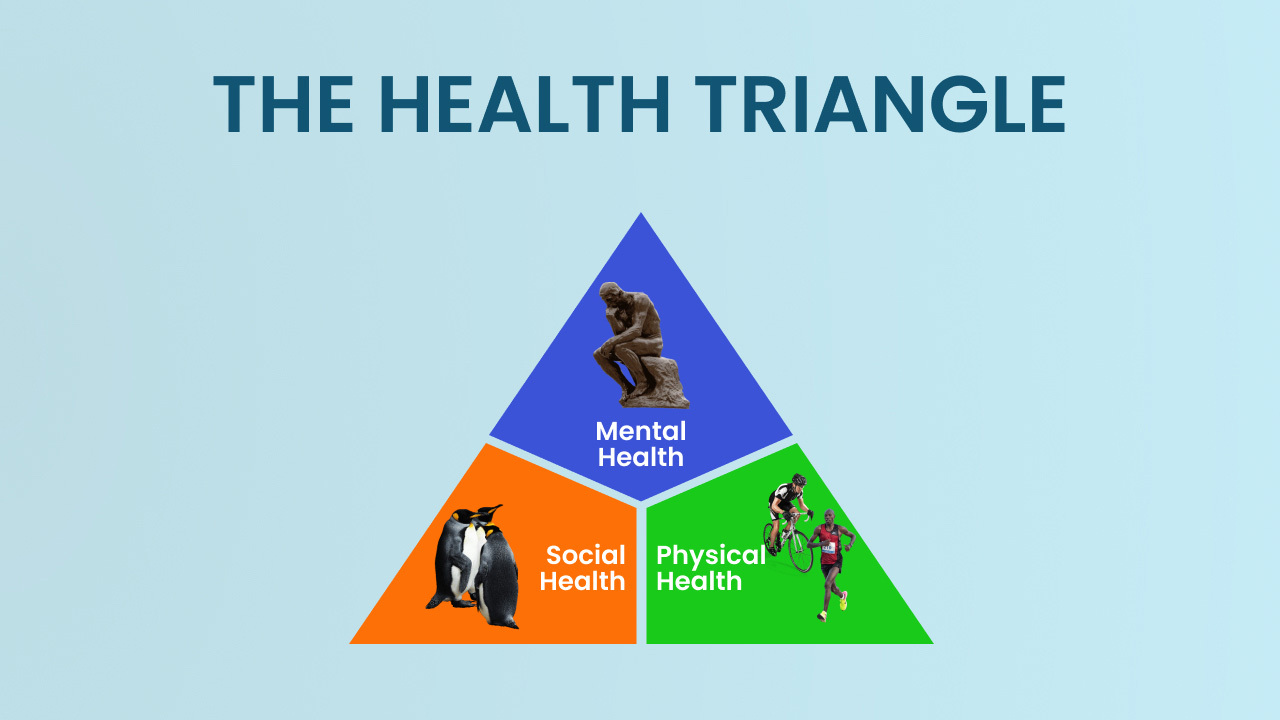
When you hear the term “Health,” what comes to your mind?
You will probably say it has something to do with being physically fit or eating good food. But that's not it. It's actually more than that.
Health is a multi-dimensional concept. In addition to physical health, it's important to consider your mental and social well-being. That's what we call the “health triangle.”
We all live an unbalanced lifestyle. More time is spent at work than sleeping, working out, or playing together. If you want to be healthy, it is absolutely important to understand your health triangle and maintain balance in your life.
Making choices about what you eat, how often you move your body, and how you spend time with people influences your overall well-being and reduces the risk of serious medical conditions.
Keep reading as we explain more about “What are the three sides of the health triangle?” We’ll also cover some practical considerations to balance your health triangle.
What Is The Health Triangle? – Key To Healthy Living
Health Triangle was originally conceptualized as a project for an Alaskan middle school in 1997. It was adapted from WHO's definition of health.
The World Health Organization (WHO, 1946) defines health as “the balance of physical, mental or emotional, and social health, and not merely the absence of disease or infirmity.”
Together, they are commonly referred to as the health triangle or wellness triangle. It corresponds to a balanced life.
You see, this concept has been shown in the form of a triangle. Indeed, it has borrowed geometric principles to illustrate how the foundations of our general health and well-being are interdependent.
Importance of The Health Triangle
You might be wondering, what’s the purpose of this health triangle? Well, as we said, it measures your overall health. It's a framework and visualization tool to help you understand the three aspects of your health. If one is out of balance, the other two will also be affected.
You can use this triangle to help you decide if you are maintaining good health. It will show you how all of the sides tie in together and how your total health is affected if one side becomes imbalanced.
It can also encourage you to change certain lifestyle habits you may have so you can maintain better health in your life.
What Are The Three Sides Of The Health Triangle?
As we discussed, understanding the health triangle helps you identify areas where you may need to pay more attention.
It could be changing your diet or workout routines, finding ways to improve your social communication, or seeking mental health therapy.
Each side of the health triangle represents an important aspect of health. They include:
- Physical health
- Mental health
- Social health
Let's quickly break down what we mean by each of these elements.
1. Physical health
We’ll start with the first one, which is the most important and well-known side. Physical health is nothing but the state or condition of your body.
It deals with your body's ability to function. We also refer to it as a state of physical fitness when a person is able to engage in daily activities without experiencing any restrictions.
We know that if we do not take care of our physical health, we will be at risk of ailments and possibly chronic diseases like diabetes or obesity, and we will not benefit from having plenty of energy and motivation.
It is, therefore, critical that we do everything we can to promote our physical health. According to the health triangle, this is one of the three areas where we must focus and achieve balance. There are three important elements to it.
They are:
- Keeping fit by regular exercise
- Eating a well-balanced diet
- Maintaining a proper weight
2. Mental and Emotional Health
To maintain a stable health triangle, one should not ignore the mental element of health. Needless to say, mental health is a broad topic that frequently varies from person to person.
Mental health is the condition of your mind or how well you express your feelings and thoughts. However, the dictionary has a specific definition for it. It is a state of functioning that includes satisfactory levels of behavioral and emotional well-being.
Emotional health is also tied to the topic of mental health because your thoughts, feelings, and self-esteem also play a huge role in your mental well-being.
Everyone has experienced stress or anxiety at some point in their lives. How you deal with tough situations and setbacks can tell whether you need to keep an eye on this aspect of the health triangle. Some also include learning ability while assessing mental health.
What’s more, mental health can impact your physical and social health as it may evoke antisocial behavior and extreme feelings of tiredness.
3. Social Health
Social health is how you relate to and get along with others, including your friends, family, colleagues, partners, classmates, etc. It refers to your comfort level in social situations.
After all, a person's real-life social network is a key marker of social health. You see, there is a link between physical and mental wellness here. A lack of friends can make you depressed, which can worsen your physical health issues.
It should be noted that each segment of the health triangle is dependent on the other two. That being said, all three sides of the health triangle are equally important.
If you overlook any one of them, you will suffer from health issues. So, try to balance these three sides of the health triangle to be in good shape and healthy.
Assume a person who is a fitness enthusiast, crazy about diet and gym, but avoids mingling with friends or family. This person may have great physical health but lack a social life.
Sometimes, this can lead to feelings of loneliness, which can negatively impact their mental health, too.
Notice how the three sides are interconnected.
Can One Aspect Of The Health Triangle Affect Others?
Most of us have a preconceived view of health. We tend to prioritize the physical element of wellness. However, emotional and social health are just as important for a truly healthy body and mind.
Yes, if one side of the health triangle affects the other, too, because you focus too much on one, you might not get enough of the other side.
Let's say Sarah is too focused on going out with friends and spending too much time with people. She doesn't have enough time to prioritize her physical health, focus on exercise, eat good food, and sleep enough, so we can say her overall health is totally imbalanced and disturbed.
When one element is overlooked or compromised, you're more likely to develop health problems in the other two segments.
Above all, to maintain our wellness triangle, we must strive to improve all three aspects of our health rather than just one or two. We can improve our health by engaging in activities that benefit all three.
How To Evaluate Your Health Triangle?
So now, you may want to measure your health according to the health triangle. Evaluating your health triangle is pretty easy and straightforward. All you have to do is go through some basic questions about each element of health—physical, mental, and social health—and answer them.
Here's a basic set of questions as a part of the health triangle assessment worksheet. Start working on it now and analyze your answers. You'll get a clear idea of which aspect of health you should focus on and where you're missing.
This will help you attain a state of good health and total well-being by ensuring that you maintain a perfect equilateral health triangle.
How Do You Maintain Your Balanced Health Triangle?
The human body is holistic. That said, your entire body, including your mind, functions as one unit. If you concentrate too little or too much on one area, the triangle loses its balance.
Thus, it's important to address your health with all three sides of the health triangle. Once you've determined where you're lacking from the health triangle assessment, you need to focus on the area that requires the most change.
We have outlined some general ways to help maintain your balanced health triangle:
i) Physical Health
Leading an active lifestyle is the best way to maintain physical health, but there are other things to consider, too.
- Food always comes first. Stick to eating a healthy and well-balanced diet that includes vegetables, whole grains, lean proteins, fruits, and low-fat milk products. Avoid sugary and fast foods to keep your gut health in check.
- Focus on staying physically active. You don't have to head to the gym or dance class (although that would be great if you do). Just 30 minutes of moderate to intense workout is enough to keep your body moving. Start by walking, swimming, yoga, boxing, Zumba, etc.
- Stay hydrated by drinking plenty of water and fresh juices. At least eight glasses of water daily is recommended to help boost bodily functions.
- Get quality sleep and get used to proper sleeping patterns daily. Aim to get at least 7 hours of sleep to give your body some rest.
- Don’t forget to take a bath and brush your teeth twice daily. Also, consider deep teeth cleaning regularly. When you maintain your personal hygiene, it keeps your body clean and prevents the spread of harmful germs.
- Go for routine health checkups. Experts advise everyone to visit a family doctor for a medical checkup once every year to ensure proper health.
ii) Mental health
Many people, including teens, struggle mentally in their lives, so it’s completely normal. However, you should know how to deal with stressful situations. Here are some ways you can do to work on your mental health:
- Practice relaxation methods as part of self-care routines. You can start by doing meditation, yoga, or listening to your favorite slow music—or anything that makes you feel calm and relaxed.
- Engage in activities that make you happy. Be it reading books, playing with your pet, painting, talking with loved ones, or even going for an evening walk.
- Begin journaling to control your mood swings. Research has shown that journaling can relieve stress and anxiety to a great extent. Write down your thoughts, emotions, and gratitude to feel good about yourself.
- Get professional counseling or therapy if you're dealing with any serious mental illness like panic attacks. Never take mental health lightly. You can also reach out to your friends and family to help you in addressing things that are stressing you out.
iii) Social Health
Follow these useful tips if you want to improve your social health:
- Maintain healthy relationships with people who are close to you. Family always comes first, so make sure to spend as much time with them as you can.
- Wherever possible, try to talk with strangers and have conversations. This will boost your confidence and help build a strong network of like-minded people.
- Join community clubs or social events and socialize with people who have similar interests or hobbies.
- Contribute to a social cause by participating in volunteer work, charitable organizations, or social activism.
What Are The Factors That Affect Your Health Triangle?
A person's well-being is influenced by a lot of things in and around them. For example, genetics is something over which you have no control.
However, some aspects of your life, such as your actions or, more specifically, your behavior toward something, are unquestionably within your control.
So, avoid getting caught up in things over which you have no control. Focus on what you can do to improve your health. According to the World Health Organization (WHO), there are six determinants of health, including:
- Environmental and physical influences
- Genetics and personal characteristics
- Behavior
- Medical care
- Social and economic factors
How Can You Tell If Someone Is Healthy?
It's pretty hard to figure out if someone is healthy when you first meet them. That's because when you ask them how they are doing, obviously, they will act like they are fine, even if they are not.
But, if a person is physically unwell, you can easily make out by looking at their appearance. However, if they are physically fine, it is difficult to find if they are struggling emotionally or mentally unless you're close to that person.
Regardless, it’s important for you to be kind and check up on that person.
Final Words
Hopefully, we have answered the question, “What are the three sides of the health triangle?” To cut it short, the health triangle is a visual representation of three sides: mental, physical, and social health.
That said, your health resembles a triangle, with all sides working together. They contribute equally to a balanced triangle.
No doubt, it's a useful concept that helps us understand the interrelation of different elements of our health. So, it's your job to balance out the three sides to have good health and well-being overall.
If you want to be the healthiest (or happiest) version of yourself, start working on the three sides of your health triangle today!
FAQs
1. What are the three areas of wellness?
Ans: The three areas of wellness include mental, physical, and spiritual well-being. They are all interconnected and make up a person’s total well-being.
2. What is the most important part of the health triangle?
Ans: All three sides of the health triangle are important. However, physical health matters the most. This is because good physical health is related to mental and social well-being.
3. How does physical health benefit all three sides of the health triangle?
Ans: Being physically active causes your brain to release a feel-good hormone known as endorphins. These natural chemicals help relieve stress and anxiety caused by not socializing with others.
4. How do you achieve a balanced health triangle?
Ans: You can achieve a balanced health triangle by focusing on eating nutritious food, exercising regularly, and getting adequate sleep.
Read Also:

























